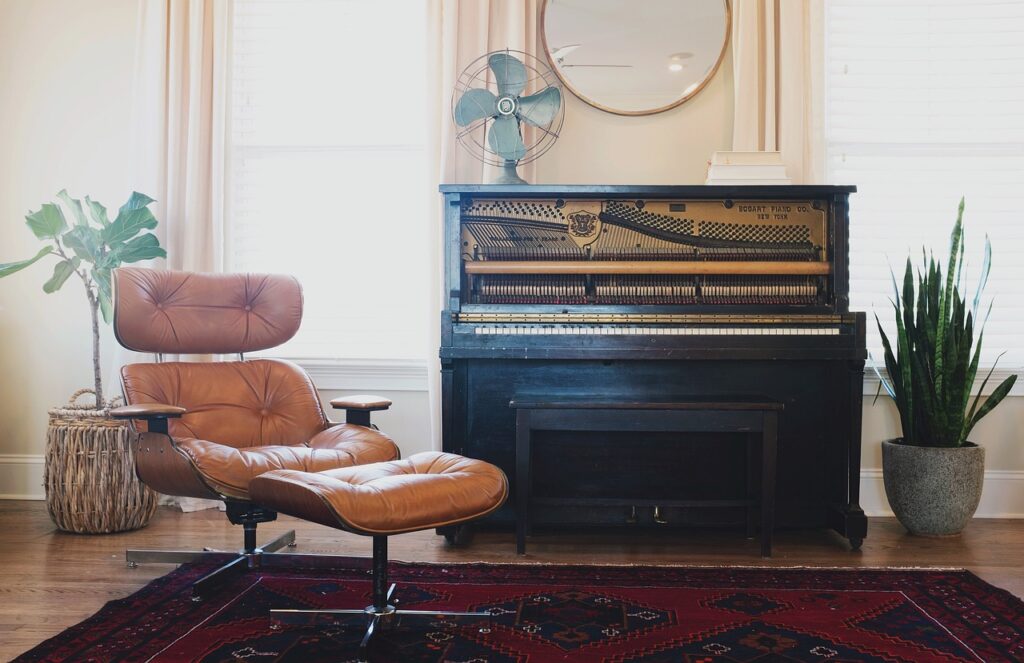Transforming your space can be a fun and refreshing activity when you know how to do it. Your home can be a canvas to showcase your personality and sense of style.
The easiest way to do this is through furniture upgrades. This article explores five ingenious strategies for transforming your living space into a haven of comfort, functionality, and visual delight.
Choose Multi-Functional Pieces
Picking multi-functional furniture pieces is a cost-effective and sustainable way to transform your space. By choosing pieces that serve multiple purposes you reduce your investment in furniture while reducing overall furniture production and resource consumption.
This strategy will also maximize your space efficiency. The pieces allow you to combine two or three functionalities into one, allowing you to optimize your space without overcrowding it.
Some good examples of multi-functional pieces are king-sized Murphy beds, an 8-seat sectional sofa, convertible coffee tables, and desk beds.
The best part about using these furniture pieces is aesthetics. This furniture normally comes with inbuilt storage or hidden features that allow you to have an organized and clutter-free home.
Embrace Minimalism
Minimalistic furniture is a current trend in home and decor. This trend is backed by the philosophy of simplicity and functionality. It creates a sense of spaciousness and calm by picking furniture with clean lines, neutral color palettes, and a focus on essentialism.
To embrace minimalism you need to first declutter your home. The best way to do this without becoming overwhelmed is by using the KonMari method by Marie Kondo.
This involves going through your possessions one category at a time. With each category, for example, seats, books, mats, etc. ask yourself if each item evokes a feeling of happiness. If it does keep it, if it doesn’t consider letting it go.
The beauty of this method is that it ensures all the items in your home make you happy.
The last thing to consider when embracing minimalism is to pick high-quality materials and good craftsmanship.

Incorporate Statement Pieces
Incorporating statement pieces in your furniture is a great way to add personality, and create focal points and style in your living spaces. Statement pieces can be both functional and decorative.
To make sure that you pick the right furniture start by picking pieces that both stand out as well as complement your existing decor. For example a sculptural and artistic chair in a minimalist room or a vibrant and colorful coffee table in a neutral space.
It’s also important to consider scale. A large room can take large furniture such as a statement sofa while smaller rooms should take proportional pieces like unique and small coffee tables.
The final thing is to tell a story while maintaining functionality. While many statement pieces are decorative such as antique heirlooms or art pieces collected during your travels, they can also be functional. A good example is an intricately crafted headboard for your bed or an artisan coffee table.
Play with Layout and Arrangement
Playing with your layout and arrangement keeps your space feeling fresh and allows you to showcase different items while preventing your house from feeling static.
It is also a cost-effective way to optimize functionality and flow in a room.
Start by considering the natural focal points in the room, for example, the fireplace or a large window. Arrange your furniture to emphasize these features while ensuring that traffic paths are clear and unobstructed.
Experiment with angles and moving the furniture away from walls to create a dynamic and inviting environment.
Mix and Match Styles
When done properly mixing and matching styles can create a visually stunning and stimulating environment.
To do this you need to identify your dominant style and ensure the majority of your furniture sticks to that style. For example modern, rustic, or boho. This becomes your anchor style.
Once this has been picked the next thing to have in mind is balance and harmony.
Do not mix too many elements, colors, and textures into it or it will become overwhelming. To do this stick to the anchor style and add complementary elements that may contrast it. For example, a contemporary sofa balanced with a vintage or rustic coffee table.






